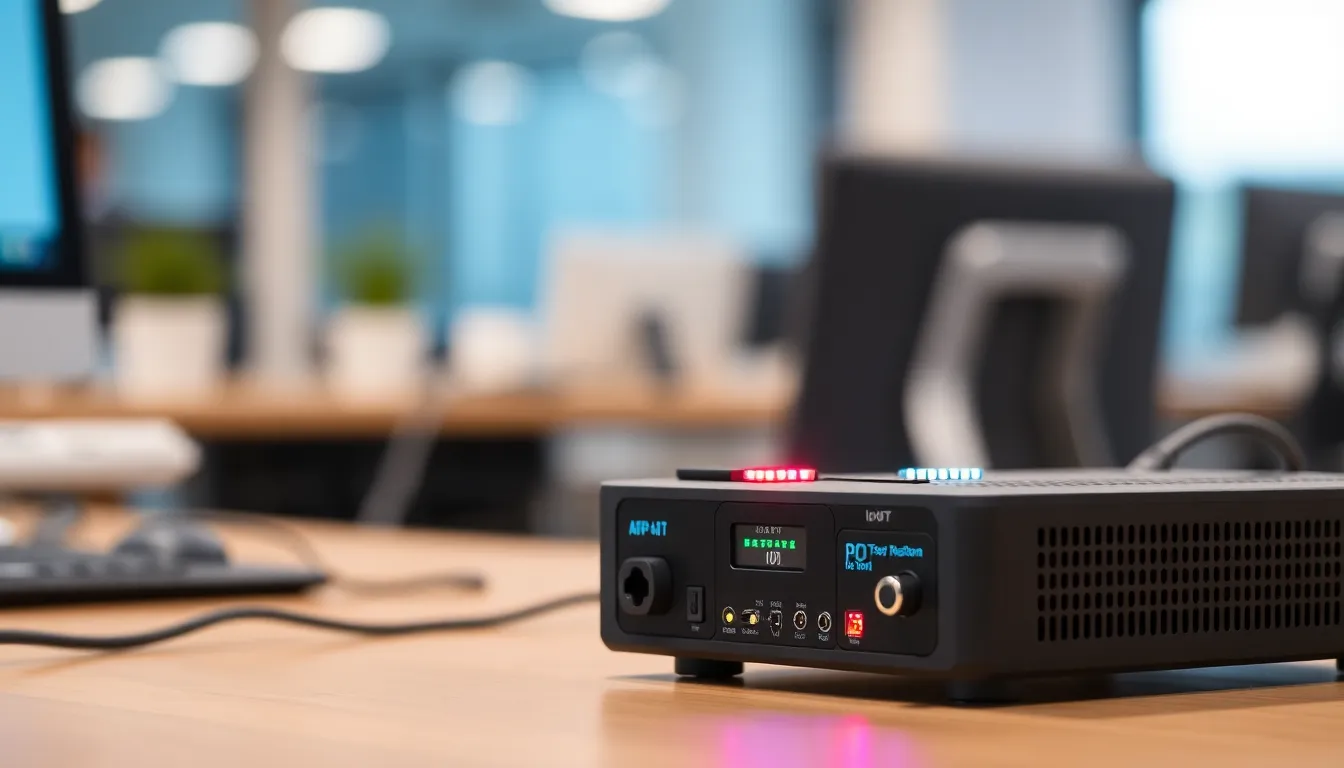In a world where smart devices are popping up faster than popcorn in a microwave, managing them can feel like herding cats—if those cats were also connected to the internet. Enter device management for IoT: the unsung hero of the tech realm. It’s not just about keeping your gadgets in line; it’s about ensuring they play nice together, boosting efficiency, and keeping security threats at bay.
Table of Contents
ToggleOverview Of Device Management IoT
Device management for the Internet of Things (IoT) encompasses various strategies and processes that ensure smart devices operate efficiently and securely. Technologies integrate to monitor and control devices, resulting in optimized performance. Administrators use management platforms to oversee device status, configurations, and firmware updates.
Security remains a significant concern in device management. Organizations must implement robust security protocols to safeguard devices from unauthorized access and data breaches. Effective management solutions help identify vulnerabilities, keeping devices updated with the latest security measures.
Scalability represents another crucial aspect of device management. As the number of IoT devices continues to rise, solutions need to accommodate growth seamlessly. Businesses benefit from tools that facilitate large-scale deployments while maintaining control over device functionalities.
Interoperability plays a vital role, allowing different devices to communicate effectively. Standardized protocols and APIs enable diverse devices to work together without compatibility issues. Utilizing interoperable solutions enhances user experience, allowing for centralized management across varied device types.
Data analytics enhances device management by providing insights into device performance and usage patterns. Managers can analyze data to make informed decisions, optimize resource allocation, and improve efficiency. Predictive analytics further assists by anticipating maintenance needs, reducing downtime.
Ultimately, effective device management promotes a streamlined IoT ecosystem. Organizations harness the full potential of their devices when they prioritize performance, security, scalability, interoperability, and data analytics. This structured approach allows for improved operational efficiency and better overall user experiences.
Key Components Of Device Management

Device management in IoT comprises several essential components that ensure efficient operation, security, and reliability of smart devices.
Device Provisioning
Device provisioning involves the initial setup and configuration of IoT devices. This process ensures devices are ready for communication with networks and other devices. Automated provisioning techniques streamline this task, reducing human intervention and errors. Predefined templates facilitate rapid deployment by standardizing settings. Organizations benefit from the compatibility of various provisioning protocols such as Lightweight M2M and OMA-DM. These protocols allow for seamless integration into existing infrastructure, ensuring devices operate without missing specifications.
Device Authentication
Device authentication verifies the identity of devices connecting to the network. This crucial process helps prevent unauthorized access and protects sensitive information. Employing robust authentication methods, including digital certificates and tokens, enhances security levels. Mutual authentication ensures that both devices and servers validate each other, further strengthening the security framework. Techniques like public key infrastructure (PKI) provide secure key management, while device identity management facilitates easier tracking and monitoring of devices over time.
Device Monitoring
Device monitoring plays a vital role in ensuring the ongoing performance and health of IoT devices. Real-time monitoring tools track device status, performance metrics, and operational parameters. By collecting and analyzing data, organizations identify potential issues before they escalate. Alerts notify administrators of significant changes or malfunctions, allowing for prompt action. Integrating monitoring tools with analytics platforms improves visibility and supports informed decision-making, ultimately leading to enhanced operational efficiency.
Challenges In Device Management IoT
Device management in the IoT landscape presents numerous challenges that organizations must navigate effectively.
Security Concerns
Security remains a significant challenge in managing IoT devices. Every connected device increases the attack surface for potential threats, making unauthorized access a persistent risk. Protecting sensitive data requires organizations to implement robust encryption protocols and secure authentication methods. Regular security updates play a crucial role in addressing vulnerabilities and resisting emerging threats. Administrators must consistently monitor device activity to detect anomalies that could indicate breaches. Cybersecurity strategies should include regular audits and compliance checks to enhance overall security posture.
Scalability Issues
Scalability poses another challenge in IoT device management. As the number of devices continues to grow, organizations must ensure their systems can handle increased loads without compromising performance. Solutions need to accommodate thousands, even millions, of devices seamlessly. Scaling infrastructure involves optimizing network capabilities and adopting advanced data management techniques. Performance monitoring becomes essential to identify potential bottlenecks and address them proactively. Companies should consider cloud integrations and distributed architectures to enhance scalability and maintain efficient operations.
Best Practices For Effective Device Management
Effective device management optimizes performance and security for IoT devices. Implementing best practices enhances device reliability and user experience.
Regular Firmware Updates
Regular firmware updates enhance device security and performance. Keeping software current prevents vulnerabilities that could be exploited. Organizations should schedule updates to ensure timely application across all devices. Monitoring for updates reduces the risk of using outdated versions. Automating this process saves time and resources while maintaining device integrity.
Data Privacy Measures
Data privacy measures play a crucial role in protecting sensitive information. Implementing encryption protocols safeguards data during transmission and storage. Organizations need to establish access control policies to limit data exposure to authorized personnel. Regularly auditing compliance with these measures ensures adherence to regulations. Training employees on best practices minimizes human error and strengthens overall security.
Future Trends In Device Management IoT
Emerging trends in device management for IoT emphasize the integration of advanced technologies. Organizations increasingly turn to AI and machine learning, enhancing the efficiency of device management processes. These technologies enable predictive analytics, allowing for proactive maintenance and real-time monitoring. As a result, organizations can optimize device performance while reducing downtime. Recent advancements show that intelligent algorithms analyze usage patterns, enabling more informed decision-making.
Additionally, edge computing plays a critical role in the future of device management. This approach processes data closer to the source, minimizing latency and bandwidth consumption. By decentralizing computing resources, organizations experience improved responsiveness and increased reliability. Device management platforms benefit from reduced data transmission to centralized servers, allowing real-time insights and faster decision-making. Integrating edge computing enhances interoperability among devices, streamlining their interactions and functionalities.
Device management for IoT is essential for navigating the complexities of an increasingly connected world. By prioritizing performance and security organizations can ensure their devices operate efficiently while minimizing risks. The integration of advanced technologies like AI and machine learning is paving the way for smarter management solutions that enhance operational capabilities.
As the IoT landscape continues to evolve the focus on scalability and interoperability will remain crucial. Embracing best practices and implementing robust security measures will empower organizations to harness the full potential of their devices. Ultimately effective device management not only streamlines operations but also enriches user experiences across various sectors.




